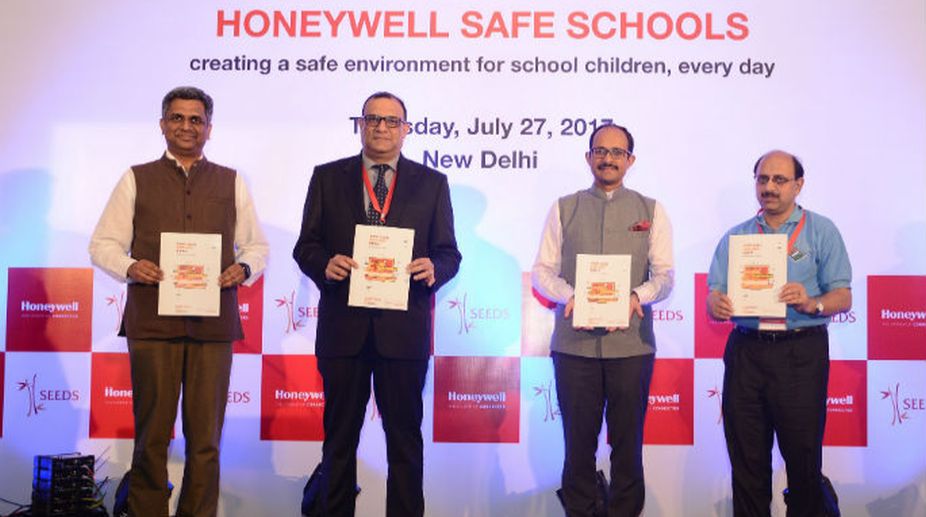Mild quake hits Assam’s Dima Hasao district; no casualties reported
A mild earthquake, measuring 3.8 on the Richter scale, hit Assam’s mountainous Dima Hasao district on Saturday night, officials said.

(Photo: Facebook)
In the year 2000, when Gujarat was shaken by a massive earthquake, it claimed several lives and buildings. But what was noticed was that around 11,600 schools (as per World Bank 2001 report) were damaged, which cost several innocent lives.
In the Kashmir earthquake too, around 6,700 schools collapsed in the Indian side and 1,300 schools in Pakistan-occupied Kashmir.
Since the earthquake took place during school time, around 18,000 children were trapped in damaged schools. Similarly, in 1988, Spitak, Northern Armenia was also hit by an earthquake during school time, and many school children lost their lives. Records say 2/3 of total deaths were children and adolescents.
Advertisement
The high casuality among children may be because they spend a major portion of the day in school and it is highly possible that when an earthquake strickes they are in school.
“Of course, we can’t fight natural calamities, but we can minimize the damage. If the schools were wellprotected and kids as well teachers were well aware about what to do in an emergency, the casuality would be much less,” informed Manu Gupta, executive director of SEEDS, a non-profit organisation.
Capital state
Now the big question is, what is the status of schools in Delhi? Are they prepared for any natural calamity? The answer is a big No. Physical, geological and spatial setting of Delhi makes it highly vulnerable to many natural as well as man-made calamities.
The Capital falls in seismic zone-IV, which is considered “high danger”. At the same time, Yamuna runs through Delhi, which makes the city prone to floods too. Now if we talk about schools in the Capital, around 3,070 out of 5,751 schools, which constitute 53 per cent, are at high risk from an earthquake.
Most schools don’t fulfill the parametres of National Disaster Management Authority. Some schools don’t have sports ground, some don’t have evacuation plans, some buildings are old and many don’t know how to react in case of any disaster.
“I don’t have the exact data, but most of the schools in Delhi don’t meet up with disaster management criteria,” informed Kamal Kishore, member of National Disaster Management Authority (NDMA).
Need to educate
In a bid to educate teachers as well as students, (SEEDS) Sustainable Environment and Ecological Development Society announced the launch of Honeywell Safe Schools, an initiative for school safety and disaster risk reduction programme in East Delhi schools.
Funded by a Honeywell India grant, the initiative will empower 25,000 students, 40,000 parents, and 1,000 teachers in East Delhi to make them disaster-ready.
This disaster risk reduction programme is tailor-made to address each school’s unique challenges to ensure children go to school without fear, remain safe in school, and return home safely.
“Our study highlights that often high potential risks are not recognised as imminent threats, and there is a need to create awareness among children, parents, teachers and civic authorities to mitigate the impact of disasters,” said Manu Gupta. Out of all natural disasters, earthquake is termed as the least predictable disaster.
A study conducted by SEEDS highlighted that for Delhi parents, the risk of road accidents, bullying and teasing are the greatest risks for their children, then come hazards like earthquakes and fire. When they were asked about the safety measures in the school, their answers centred around installing grills.
Making the building safer and deploying security guards are in their list while the most critical evacuation plans were not in their list. However, past experience showed that vulnerability of school buildings is high compared to other infrastructure.
Therefore, it is high time to upgrade school buildings to proof them against disasters.
Advertisement